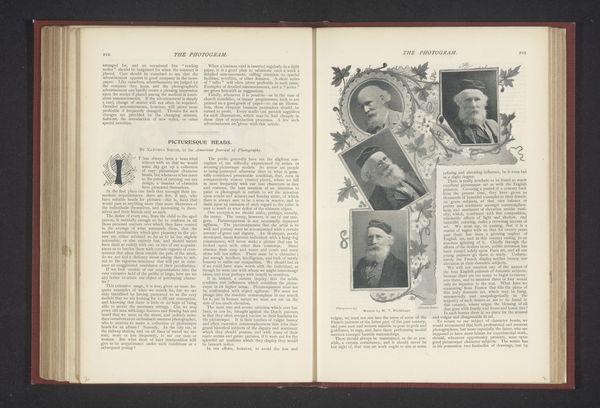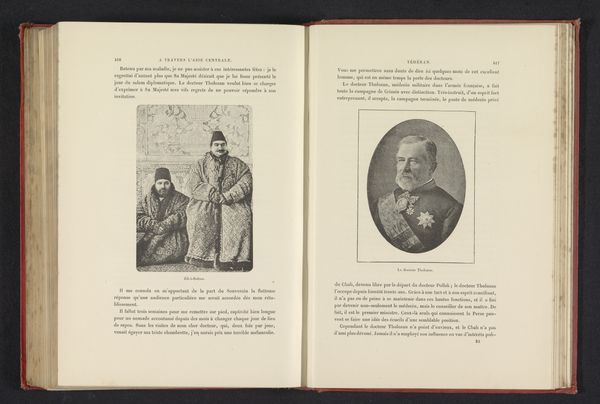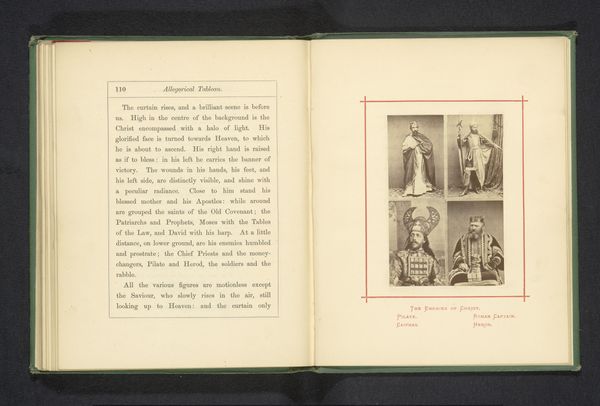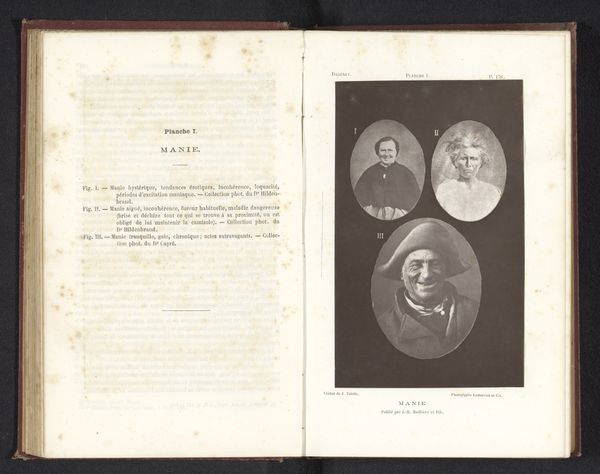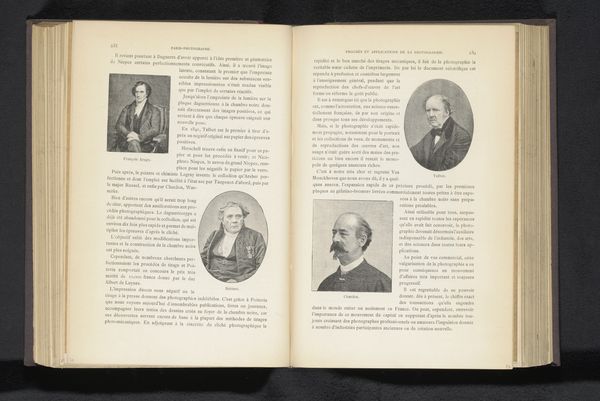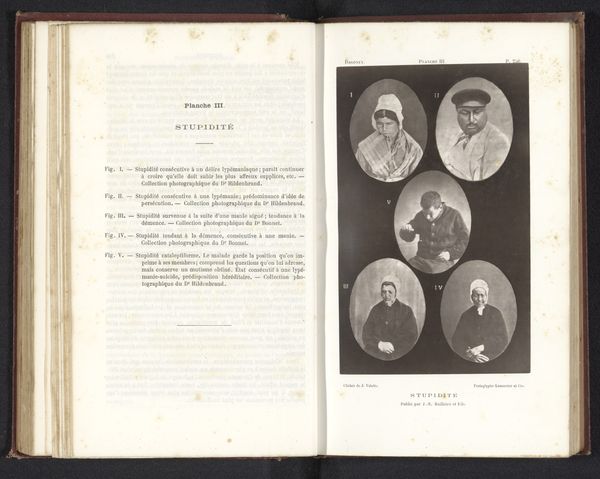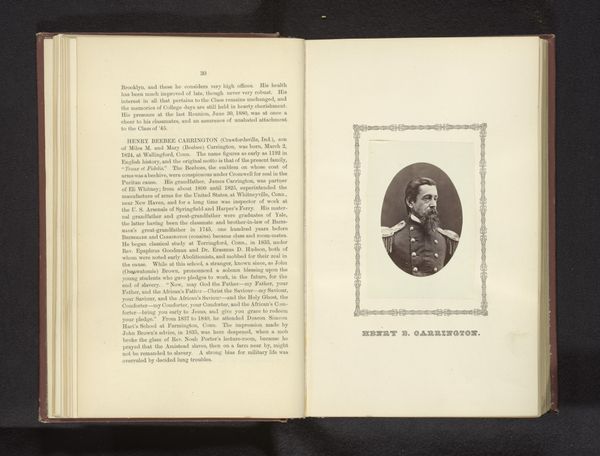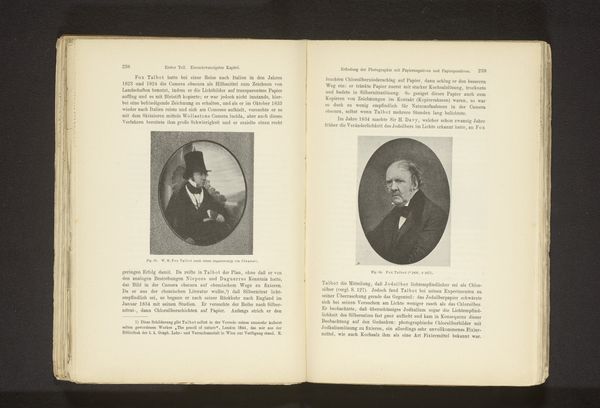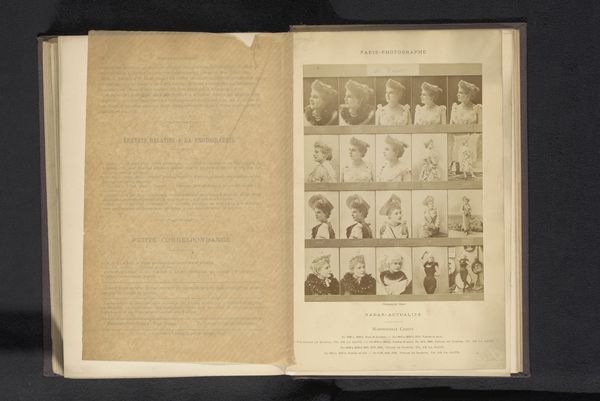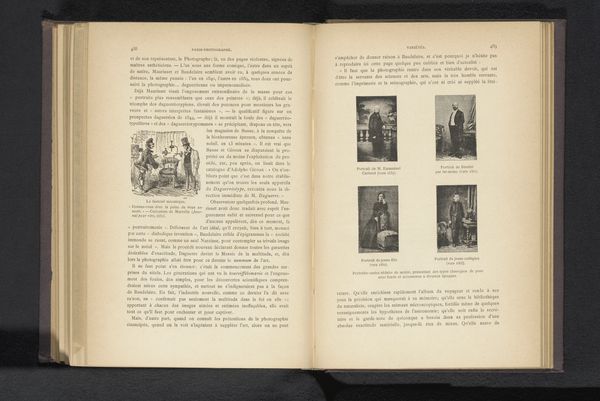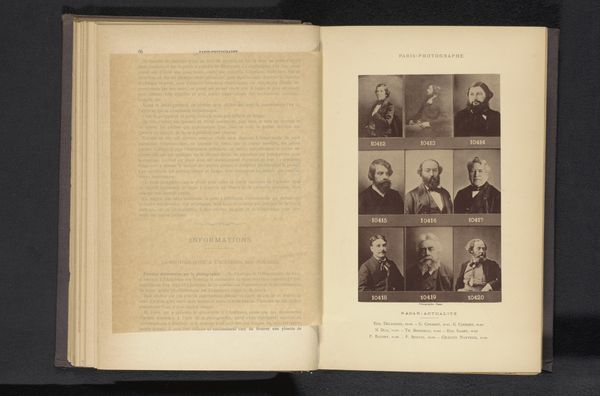
print, photography
#
portrait
# print
#
photography
#
genre-painting
Dimensions: height 259 mm, width 175 mm
Copyright: Rijks Museum: Open Domain
Curator: Opening this old book, we see “Portretten van Pierre Savorgnan de Brazza en Jean Dybowski”, a print likely based on photographs dating from before 1892. The prints now reside in the Rijksmuseum collection. What jumps out at you? Editor: Well, initially, a sense of… historical remove. They feel distant, almost ghostly, peering out from the aged pages. There's a formality to the presentation itself; very composed, orderly. But, looking more closely, the faces tell stories. Curator: Indeed! Note the contrast between De Brazza in his military garb versus Dybowski in what appears to be traditional North African dress. These sartorial choices point to the duality of colonial identity—the explorer as conqueror versus the explorer embracing, at least visually, the local culture. Editor: Absolutely. The hat, for instance, immediately flags up exoticism. Throughout history, clothing acts as a form of code and identity, here signaling both belonging and otherness simultaneously. In the images from before 1892, each carefully chosen prop contributes to a broader narrative. They become symbols loaded with implication and meaning for their contemporary viewers. Curator: Right. Even in their relative immobility as posed portraits, the men seem caught between worlds. There's a vulnerability too—perhaps it’s just me—beneath those seemingly composed expressions. Do they represent noble ambition, or simply reflect power dynamics? Editor: Perhaps both are at play, unavoidably. Portraiture of this era wasn't always concerned with psychological depth, it focused rather on solidifying status. And their expressions? I perceive perhaps the weight of expectations on the explorers. Their images would have represented a projection of European influence and “superiority”. But yes, you’re correct to feel vulnerability. Therein resides their complex humanity and something unknowable now about what thoughts filled their minds as they looked straight into that lens of time. Curator: An echo then through the years. Even after viewing this artwork from the Rijksmuseum, I am prompted to consider the legacy and ethical implications of colonialism and portraiture. Editor: So much remains present between the men pictured, reminding us of a crucial truth; these faces of the past gaze back with haunting power across history and our interpretations today.
Comments
No comments
Be the first to comment and join the conversation on the ultimate creative platform.
